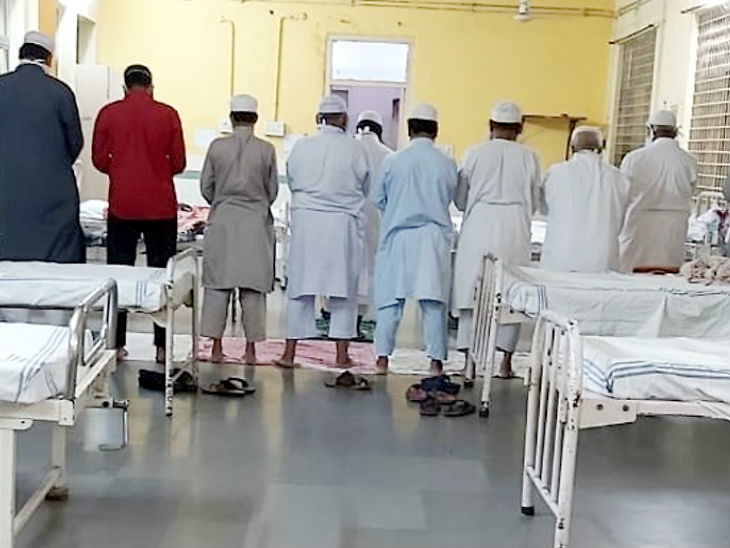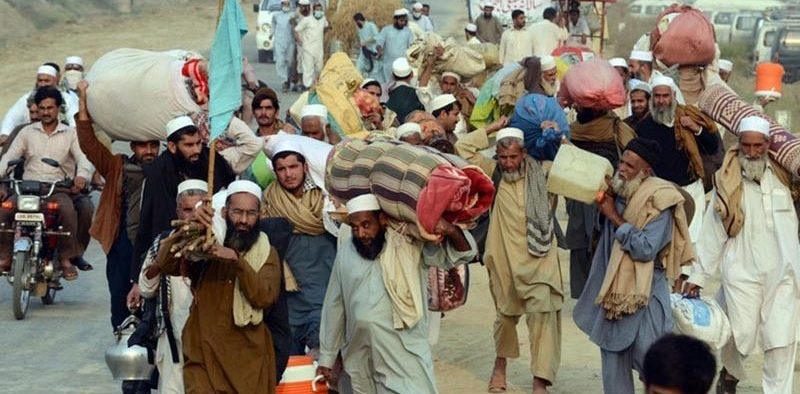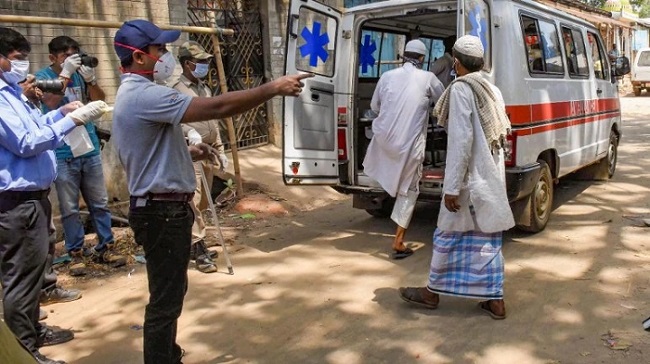
“The Tablighi Jamaat had in 2010 over 80 million followers spread out over more than 150 countries. The exact numbers are difficult to track because the Jamaat doesn’t follow a centralized system,” wrote the Pew Research Center’s Religion and Public Life Project in Washington.
Da’wa meaning invitation to faith and jihad meaning struggle for enforcing faith are central to Islamic teachings. Da’wa is Islamic mission sanctioned by the Holy Prophet in his lifetime. Muslims made it a part of their political theory by relating da’wa to jihad. The concept of da’wa got integrated into their political agendas. Taken in general, the intertwining of da’wa and politics, then, has been a feature throughout Muslim history. Iranian theocratic regime, for example, has a separate Ministry of al Da’wa wal Ershad.
Background
In 1926, the Deoband alumni, Maulana Muhammad Ilyas Khan Kandhalwi, descending from a proselytized Mewati Rajput Hindu family pioneered a “non-political and entirely a social-religious” movement for spreading true faith by strictly adhering to the Islamic principles, traditions and rituals laid down by the Prophet Muhammad, and following his lifestyle.
Its goal is to create the “golden age” of Islam (Khilafat) through invitation (tabligh) to nominal Muslims to return to the six pillars of Islam, as espoused by Prophet Muhammad, wrote Lamia Karim of Berkley Centre of George Town University in May 2014.

Focusing on return to primary Sunni Islam, particularly in matters of rituals, attires, and personal behaviour, Tablighi Jamaat urges concentration on six pillars — kalima (belief in the oneness of Allah), salah (daily prayers), ilm and zikr (remembrance of Allah and fellowship), ikraam-e-Muslim (to treat fellow Muslims with respect), tas’hih-i-niyyat (to reform and devote one’s life to Islamic ideals), and da’wa (to preach the message of Allah).
The “secularists” and the urban liberals are disposed to theorize that the movement began as an effort to counter the activities of Hindu revivalists in India who, at the time, were allegedly attempting to convert Muslims back to Hinduism.
“Worried that existing Islamic educational institutions were not capable of fending off the Hindu challenge, Ilyas envisioned a movement that would send missionaries to villages to instill Muslims with core Islamic values,” said the Pew report. This could be a reference to the Arya Samaj movement (founded in 1875) of Hindu India initiated by Swami Dayanand Saraswati. A comparative but dispassionate study will show that Arya Samaj had embarked on a total reformation of Hinduism from deeply embedded ritualistic and idolatrous practices to pure Vedic traditions. It was reformation and neither propagation nor proliferation. On the other hand, the Tablighi movement is a large scale initiative for spreading Islamic faith and fourteen-centuries-old Islamic ways of life in letter and in spirit, albeit without taking apparent recourse to politics or proselytizing venture.
What prompted the Tablighi Jamaat movement?
It appears the founder of Tablighi Jamaat movement was prompted by two factors to undertake the initiative. One was that after receiving education at Deoband, he came to understand that his community people, Mewatis, being originally Hindu Rajputs, had still retained traces of their original faith (Hinduism). It offended him.
The second was that the fears of Muslim disunity were aroused by decline of Ottoman Empire — the pre-eminent Islamic power of whose Sultan, the Caliph, was seen by pan-Islamists as the leader of worldwide Muslim community. The caliphate was endangered first by Italian attacks (1911) followed by the Balkan war (1912–13), and later by the empire’s-defeat and decline in World War-I (1914–18).
In India, Ali brothers supported by the Congress stalwart Maulana Abul Kalam Azad, vigorously campaigned for the Ottoman Caliphate. It found great moral support when Gandhi leading the Non-Cooperation Movement against the British Raj pledged his own and of Congress’ support to the retrograde concept called Khilafat movement. In 1920 this movement suffered moral defeat by the ḥijrat (exodus) of about 18,000 Indian Muslim peasants to Kabul as they felt that India was an apostate land. It was also tarnished by the Muslim Malabar rebellion in South India in 1921. Gandhi’s suspension of his movement and his arrest in March 1922 further weakened the Khilafat movement. After driving away the Greeks from Asia Minor in 1922, Mustafa Kamal deposed the Turkish Sultan Mehmed-VI in the same year. The movement finally collapsed when Kamal Atatürk abolished the Caliphate altogether in 1924.
This shows that the Tablighi Jamaat movement symbolized reaction to crumbling Muslim centrality in the early years of the 20th century and an expression of its solicitation for the revival of moral Islam. It sprang from the gloom that had engulfed the Islamic world with emaciated Ottoman Caliphate and Gandhi and Congress trying to pilot a sinking ship. This also explains what the cliché like rituals, customs, lifestyle dress code etc. in the Tablighi concept means.
Apolitical Strategy
It is true that during its formative stages the Tablighi Jamaat insisted on remaining apolitical, obviously with an implicit purpose. The organization has been insisting on its global reach and not restricted to India. Muslims are found in at least 153 countries of the world. If the Tablighi Jamaat remained glued to any particular political ideology, it would have become difficult for it to open its fangs in the vast world and become the largest missionary movement in the annals of history. In particular, the liberal western societies would have been mistrustful of its intentions. The Tablighi Jamaat thus achieved unprecedented popularity across the globe and numerous important personalities in Pakistan like Lt. Gen. Javed Nasir, former chief of ISI and Pakistan Army General Mahmud Ahmed are among its members.
Tablighis are heavily criticized by militant Deobandi Islamists, such as the Taliban, Kashmiri militant groups, anti-Shiite sectarian militant groups and Jamiat-e- Ulema-i-Islam (JUI) for their apolitical stance. They are often criticized by orthodox religious authorities (ulema), such as Sunni Wahhabi ulema in Saudi Arabia, who have issued a fatwa prohibiting the Tablighis from preaching in the country or distributing Tablighi literature. The Wahhabi ulema have issued rulings declaring Tablighis to be deviants and forbidding participation in the Tablighi activities.
Links to terrorist organizations?
Does Tablighi Jamaat have links with terrorist organizations or not, is an absorbing discussion. While pro-Tablighis swear by its apolitical standing, various western official and non-official agencies take it a fertile ground for providing fresh recruits to militant organizations for sabotaging democratic and secular ideologies.
Notwithstanding its claim to puritanical and apolitical Islamic movements, Tablighi Jamaat is largely reported to serve as a fertile ground for the growth of Islamic religious extremists. Emphatic hints of Tablighi Jamaat providing terrorist recruits to Al Qaeda and other Islamic militant groups are available in sections of media. Susan Sachs published a detailed piece The Truth is worth it in the New York Times of July 14, 2003, bringing about Tablighi Jamaat-Al Qaeda link. Paul Lewis authored an incisive piece titled Inside the Islamic Group accused by M15 and FBI in The Guardian of 19 August 2006 starting with the assertion, “The organization – influenced by a branch of Saudi Arabian Islam known as Wahhabism – has already been linked to two of the July 7 suicide bombers who attended a Tablighi mosque at the organization’s headquarters in Dewsbury, West Yorkshire. The jailed shoe bomber Richard Reid is also known to have attended Tablighi meeting.”
Spanish police conducted a series of raids on apartment buildings, a mosque and a prayer hall in Barcelona on Jan 19, seizing bomb-making materials and arresting 14 men who allegedly were planning to attack targets in the city. Spanish Interior Minister Alfredo Perez Rubalcaba said the detainees were Islamists belonging to a “well-organized group that had gone a step beyond radicalization.” A Muslim leader in Barcelona was quoted in some media reports as saying that the 14 suspects — 12 Pakistanis, an Indian and a Bangladeshi — were members of a “Pakistani-based group called Tablighi Jamaat.”
“After the collapse of Soviet Union in 1991, the movement made inroads into Central Asia. As of 2007, it was estimated that 10,000 Tablighi Jamaat members could be found in Kyrgyzstan that was largely driven by Pakistani members initially,” wrote Roter Igor on Eurasianet on 23 June 2007. In an FBI report, it was said that the terrorist plots and attacks on civilians that members of Tablighi Jamaat have been connected with include the Portland Seven, the Lackawanna Six, the 2006 trans-Atlantic aircraft plot, the 7/7 London bombings, the 2007 London car bombs, and 2007 Glasgow International Airport attack and 2007 Glasgow International Airport attack. According to French Tablighi expert Marc Gaborieau, its philosophy and transnational goals include the “planned conquest of the World.”
Tablighi Jamaat in Pakistan
Former Pakistan Prime Minister Nawaz Sharif’s father, a prominent Tablighi member and financier, helped Tablighi members take prominent political positions. In 1998, Muhammad Rafique Tarar, a Tablighi sympathiser, was made Pakistan’s President. In 1990, Lt. Gen. Javed Nasir assumed the powerful director-generalship of the ISI. In 1995, after Benazir Bhutto returned to the premiership, the Pakistani Army thwarted a coup attempt by several dozen high-ranking military officers and civilians, some of whom were members of the Tablighi Jamaat and some of whom also held membership in Harakatu’l Mujahedeen, which has been reported by the US State Department as a terrorist organization.

In January 2016, in what was “probably the first time that any restriction has been placed on Tablighi Jamaat” in Pakistan, the government (Punjab) banned preaching on university campuses and banned Tablighi Jamaat (and other non-students) from preaching and staying in campus hostels. Curiously, some university campuses in India have become hotbeds for the propagation of extremist Islam and related jihadist ideology.
Tablighi Jamaat and their role in Coronavirus pandemic
Coronavirus pandemic 2019-20 suddenly brought Tablighi Jamaat into the global limelight. At its 27 February to 1 March 2020 convention at the Sri Petaling Mosque in Kuala Lumpur, Malaysia, more than 600 persons contracted COVID-19 to become the largest-known centre of transmission of the Coronavirus in Southeast Asia. By 17 March 2020, most of the COVID-19 cases in Brunei, Singapore, Thailand and Cambodia traced their cases back to this Kuala Lampur convention.
Despite the outbreak of the virus, Tablighi Jamaat organized a second international mass gathering on 18 March in Gowa Regency. Though the Raiwind gathering near Lahore was called off, yet 150,000 returning Tablighis carried the virus with them including two cases in the Gaza Strip.

Tablighi Markaz at Nizamuddin West in New Delhi is the epicentre for spread of COVID-19 across India. (Photo: PTI)
At the Tablighi Jamaat Markaz (Headquarter) Nizamuddin West locality in Delhi, weekly Tablighi congregations (ijtima) were held till March 21. Misusing their tourist visa facility, the foreign participants engaged themselves in missionary activities and did not take the stipulated 14-day home quarantine for travelers from abroad. At least 24 of them had tested positive for the virus among the 300 who showed symptoms by 31 March 2020. Preachers from Indonesia are believed to be the first carriers of the virus. Many had returned to their states carrying the virus with them and some provided refuge to foreign speakers without the knowledge of local governments resulting in local transmission as in Tamil Nadu, Telangana, Karnataka, Jammu & Kashmir and Assam. After evacuation from the markaz, of the scores of participants, 167 were quarantined in a railway facility in south-east Delhi. There were further complications after the staff at the quarantine facility reported that the Tabligh Jamaat followers misbehaved with the medical staff and spat at the doctors looking after them. Tablighi Jamaat gathering emerged as one of India’s major Coronavirus hotspots after 389 people linked to Tablighi Jamaat tested positive by 2 April 2020.
In the meanwhile, Delhi government ordered an FIR against Maulana Sa’ad head of Nizamuddin faction of the Tablighi Jamaat and others by Delhi Police Crime Branch under Section 3 (the penalty for offence) of the Epidemic Diseases Act of 1897 and Sections 269 (Negligent Act likely to spread infection of disease), 270 (Malignant Act likely to spread infection of disease), 271 (disobedience to quarantine rule) and 120b (punishment of criminal conspiracy) of the IPC. Since the country is observing lockdown as a precautionary measure to defeat the COVID -19, judicial processes of the FIRs filed by police may take a long time to process.
